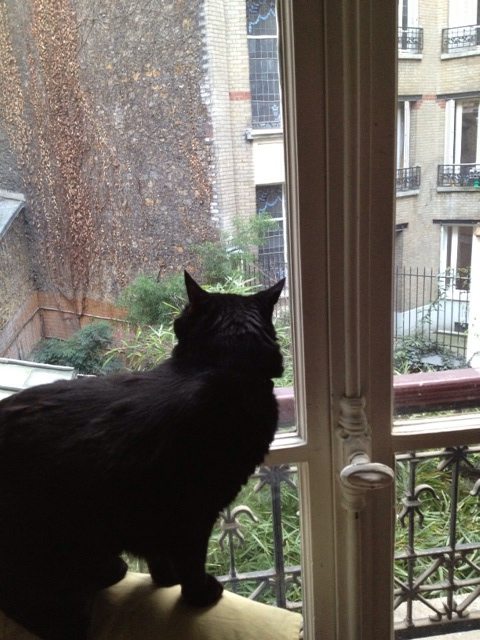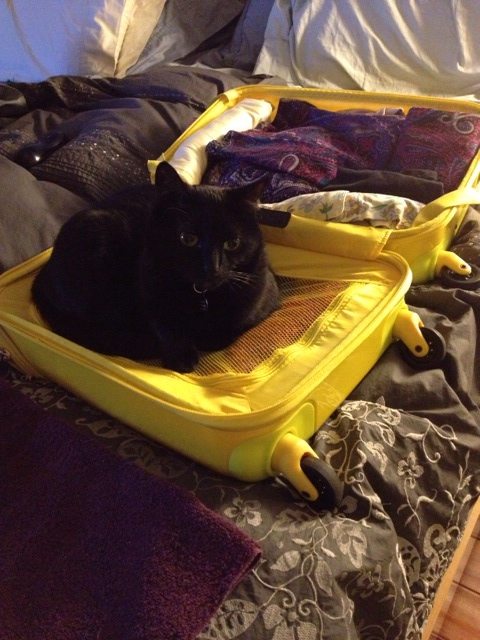
Cats…they run your life and yet often want very little to do with you. Still, when traveling for long periods of time, you just can’t leave them home ( or perhaps don’t want to leave them at home.) Such was our case. We could not imagine leaving the two felines who run this household behind, so we began investigating ways to bring them to Paris. Believe it or not, it is actually a little easier than obtaining a human long stay visa.
The first step is to obtain the official bilingual certificate to be completed. This can be downloaded from the French Embassy site (http://ambafrance-us.org/spip.php?article783) or from the USDA site (http://www.aphis.usda.gov/regulations/vs/iregs/animals/). The certificate is self-explanatory but it may look a little daunting; an English translation is provided. We completed the form in English.
This official bilingual health certificate must be completed by a USDA-accredited veterinarian. It is very likely that your local vet is USDA-accredited (ours was.)
Probably the most important thing to do is to follow the correct sequence of requirements. Your cat must be identified by a microchip compatible with ISO standard 11784 or 11785. These are the microchips used in Europe. If your cat is identified with a different type of microchip, you must bring the chip reader with you. We had no problem, since the vet had the correct chip. Microchip implantation MUST OCCUR PRIOR TO rabies vaccination. Any rabies vaccination that occurs prior to microchip implantation is not considered valid regardless of whether the animal was up-to-date on its previous rabies vaccines. In this case, the animal must be revaccinated. 21 days must have elapsed after the first (primary) vaccination after implantation of the microchip before the animal is eligible to enter the European Union.
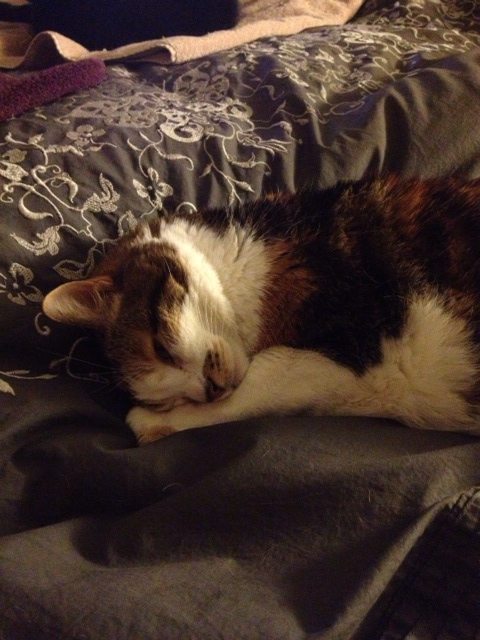
Our cats were implanted with the chip and then a couple of days later, received their rabies and other vaccinations. The European Union is most concerned with a valid rabies vaccination and up until recently required a rabies blood titer; fortunately this is no longer necessary if bringing your cat from the US, although it may be required from other countries.
Once all the requirements are completed and your vet has attested to this and signed the form, you must send the original form to the USDA for its endorsement. Fortunately, the USDA allows you to email a draft certificate for ensure everything is correct before submitting the final certificate. We did this and the form was approved within 24 hours. We then sent in the original. Be aware that the certificate is only valid for 10 days from the date of issue by your vet to the date of arrival into Europe. Definitely send the original by Federal Express to the USDA office for your area and provide a return Federal Express envelope and air bill to expedite its return. Once we received the endorsed form, we were ready…almost.
The decision as to whether to bring your cat with you as carry-on luggage or as checked baggage is often not yours to make. All airlines have different weight requirements and carrier requirements. We flew Air France and our cats were over the weight requirement, so they had to fly as checked luggage. No one was happy!
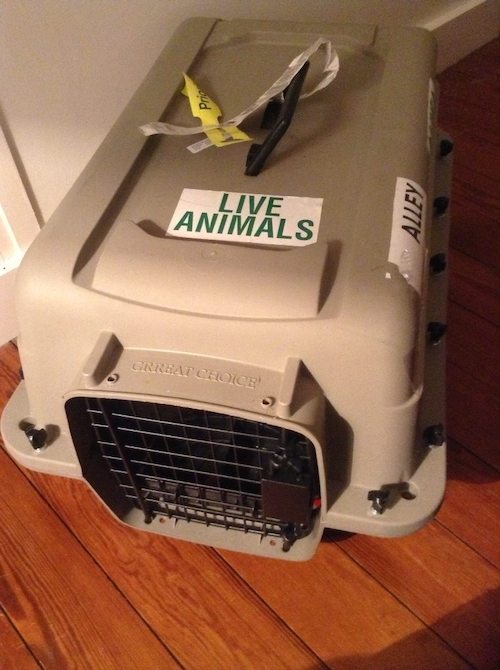
Air France does provide instructions on the carrier to be used, which we followed to the letter. The instructions are found on the Air France website and are very specific as to how the crates are put together. We reinforced the sides with screws so that everything would be secure. At the airport, Air France uses their own zip ties to secure the front door. We also were allowed to place food and water cups attached to the door on the inside. One of the employees suggested that we place an ice cube in the water cup, as it would provide liquid during the flight without spilling. Most airlines prefer that your cat not be sedated (and our vet agreed), as sedation may affect heart rate and blood pressure. We did give one of the cats an anti-motion pill, which seemed to help, although we couldn’t get the pill down the other cat…he’s very stubborn!
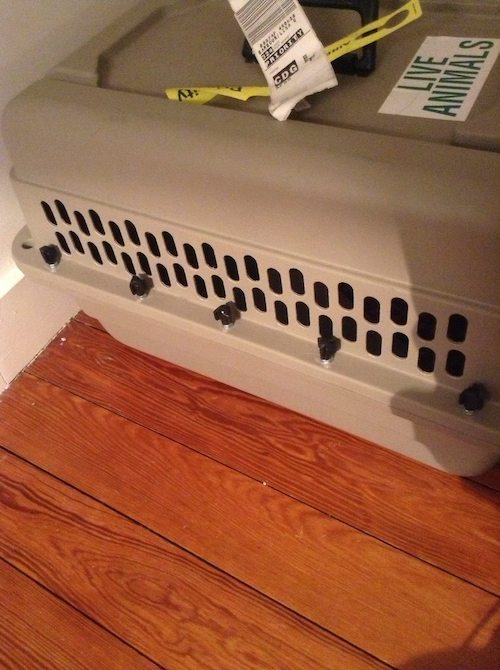
The papers were checked at the Air France counter; they were mainly interested in the rabies vaccine, and then they took the cats, at which point I (Lisa) had a complete melt-down. I watched the employee wheel my babies away (one is 12 years old, the other is 10) and just hoped they would be okay after an 11-hour flight.
I was so nuts that when we boarded, I asked one of the flight attendants if the cats had made it on board. He was extremely helpful, going to check on their status. Even with everyone getting on the plane, he made sure to find me to let me know that they were indeed on board.
Towards the end of our flight, I asked another flight attendant where we would pick up the cats in Paris. She also was very helpful and told us where to go. Everyone was very empathetic, which definitely helped. We waited a little at baggage pick-up and then there they were…a little confused and a little mad, but we were all happy to see each other!
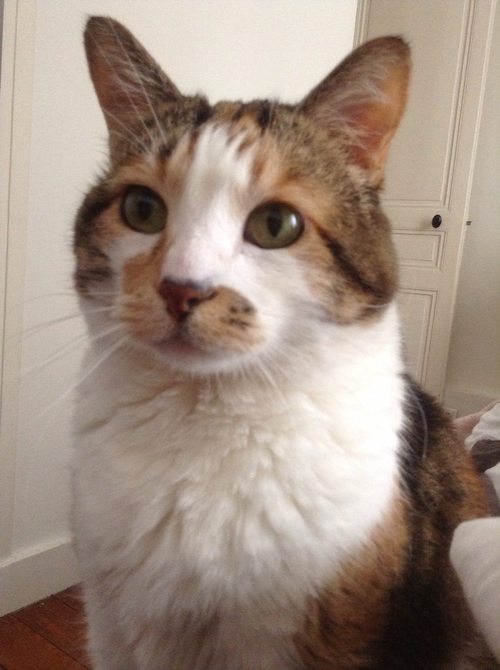
We have all settled in Paris and I’m very glad we made the decision to bring them, but I don’t know to tell them we’re making the return journey in a few months. I hope I survive!
